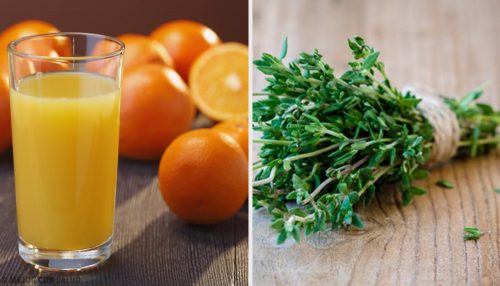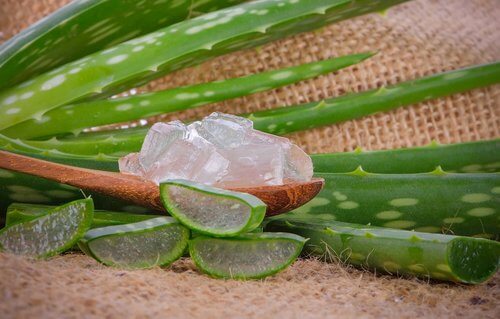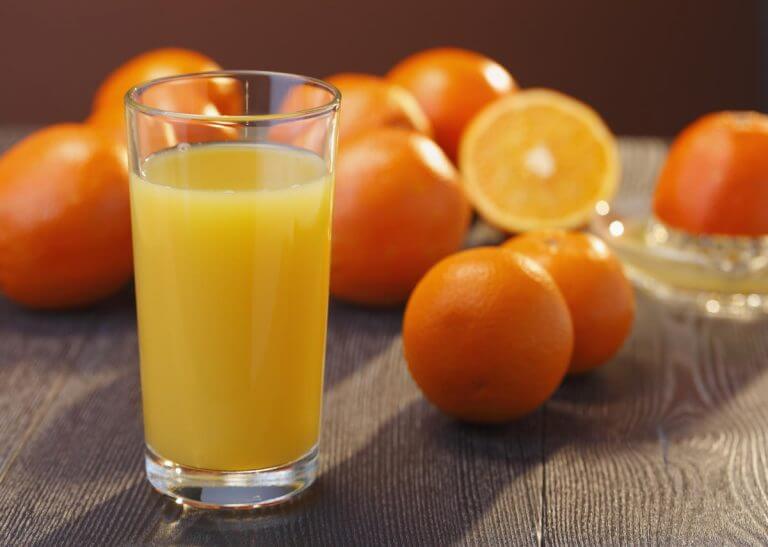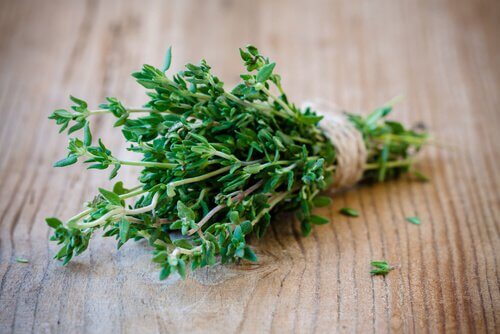6 Natural Antibiotics that You Probably Didn't Know About


Written and verified by the doctor Nelton Abdon Ramos Rojas
You’ve probably already taken antibiotics at some point in your life. Since the 20th century, they’ve been around revolutionizing medicine and fighting infections.
However, not everything needs penicillin. There are may other completely natural options that attack the infected zone just the same.
Since the beginning of mankind, natural substances and plants have been used to fight infections. However, currently, we have submitted these substances to chemical processes that eliminate parts of their essential properties.
In addition, incorrect use of antibacterial substances has caused the development of cells that are resistant to them. Because of this, it’s important to carry out a healthy lifestyle and to prevent even worse side effects.
One of the best remedies is using the benefits of medicinal plants to naturally strengthen your immune system. This reduces the amount of germs in your body and also creates a defense against microbes and viruses.
Leave behind self-medication, high doses, and interrupted treatments because all they’re doing is worsening the problem. Look over the following remedies and choose the one that best suits you.
1. Aloe vera gel, honey and lemon

One of the most effective natural antiseptics, thanks to its high content of salicylic acid and magnesium lactate that helps to reduce pain and inflammation, is aloe vera.
Not to mention, it’s a great topical treatment because it heals and regenerates the skin. Aloe vera pulp helps to treat colds and itchy throats.
As for the honey, it contains a protein called defensin-1 that kills bacteria.
Meanwhile, llemon is an expectorant and antiviral that’s capable of fighting congestion.
Ingredients
- 1 tablespoon of aloe vera gel (15 g)
- The juice from one lemon
- 1 tablespoon of honey (25 g)
How to use it?
- The only thing you have to do is blend the aloe vera pulp with the lemon juice and tablespoon of honey.
- Take a tablespoon of the mixture once a day
- Do this for 3 days and you will notice the results
Note: this is not recommended for pregnant women or children under the age of 8
2. Black mustard powder
If you have a cold, try washing your feet with a little mustard.
The reason? Mustard has properties that elevate the temperature of the body by eliminating toxins.
It also stimulates circulation and helps the body to perspire better. Use this method before you notice the first symptoms so that the bacteria doesn’t have the opportunity to attack.
Ingredients
- 8 cups of water (2 liters)
- 1 tablespoon of mustard powder (10 g)
How to use it?
- Add the mustard powder to two liters of hot water
- Mix until it’s completely dissolved
- Submerge your feet in the water for 15-20 minutes
Note: Don’t exceed 20 minutes to avoid redness, inflammation, or in the worst cases, blisters.
3. Orange, carrot, and beer yeast juice

Is your throat congested? Carrot juice is a natural source of vitamin A and alkalizes the circulatory system. Thus, it stimulates, hydrates, and cleans the body.
As for the oranges, they contain antioxidants and are disinfectants.
And the beer yeast? It increases the body’s defenses due to its antimicrobial effects thanks to its contents of vitamin B and zinc.
Ingredients
- The juice from one carrot
- The juice from one orange
- 1 tablespoon of beer yeast (10 g)
How to use it?
- First, mix the carrot juice with the orange juice.
- Add the tablespoon of beer yeast and mix well.
- Drink in the morning before breakfast.
- In addition to relieving throat pain, your lungs will also thank you.
4. Pineapple
This remedy is ideal for nasal and sinus allergies.
Although the majority of people don’t keep in mind pineapple’s properties, its high water content helps to decrease the retention of liquids and eases the elimination of toxins.
It also contains bromelain, an enzyme that’s in charge of decongesting the paranasal sinuses.
How to use it
You decide! You can eat pieces of it throughout the day or drink pineapple juice in the morning.
5. Thyme, salvia and lemon

One way to prevent infections is to return the time when our grandmothers made us gargle.
Thyme and salvia are antiseptics that fight germs that live in the lungs and especially in the throat.
Lemon contains acids that are in charge of decreasing mucus and calming the tickling feeling, irritation, and throat pain.
Ingredients
- 1 tablespoon of dried salvia (10 g) and 1 tablespoon of thyme (10 g)
- 1 cup of water (250 ml)
- The juice from one lemon
How to use it?
- Put the tablespoon of dried salvia and the tablespoon of thyme in boiling water
- Let them infuse for 10 minutes, then strain
- Add the fresh lemon juice
- Gargle for 1 minute, up to three times
- Repeat every night until your symptoms disappear
6. Cinnamon
The extract that comes from cinnamon helps to stop infections due to its antibacterial and anti-inflammatory properties, and the fact that it increases sweating.
Because of this, it’s an ideal spice for fighting respiratory illnesses like colds and allergies.
Ingredients
- 1 twig of cinnamon or 1 tablespoon of cinnamon powder (10 g)
- 1 cup of water (250 ml)
- Honey (to taste)
How to use it
- We recommend using a cinnamon twig instead of the powder.
- You only need to make the tea with a piece of cinnamon in the water and then sweeten with the honey.
- You can drink it in the morning or before going to bed.
Other recommendations
- Enjoy a diet rich in proteins and vegetables.
- Take probiotics in order to maintain a healthy intestinal flora.
- Check that you are up-to-date on your shots, especially during infection season.
- Use antibacterial products.
- Keep your environment clean.
All cited sources were thoroughly reviewed by our team to ensure their quality, reliability, currency, and validity. The bibliography of this article was considered reliable and of academic or scientific accuracy.
- L. Quave, C. Antibiotics from nature: tradicional medicine as a source of new solutions for combating antimicrobial resistence. [Avaiable online].
- Coy Barrera Carlos Andrés, Eunice Acosta Gema. Actividad antibacteriana y determinación de la composición química de los aceites esenciales de romero (Rosmarinus officinalis), tomillo (Thymus vulgaris) y cúrcuma (Curcuma longa) de Colombia. Rev Cubana Plant Med [Internet]. 2013 Jun [citado 2019 Ago 28] ; 18( 2 ): 237-246. Disponible en: http://scielo.sld.cu/scielo.php?script=sci_arttext&pid=S1028-47962013000200007&lng=es.
- Clardy, J., Fischbach, M. A., & Currie, C. R. (2009). The natural history of antibiotics. Current Biology. https://doi.org/10.1016/j.cub.2009.04.001
- Clardy, J., Fischbach, M. A., & Walsh, C. T. (2006). New antibiotics from bacterial natural products. Nature Biotechnology. https://doi.org/10.1038/nbt1266
- Méndez Álvarez Nelson, Angulo Ortíz Alberto, Contreras Martínez Orfa. Actividad antibacteriana in vitro de Curcuma longa (Zingiberaceae) frente a bacterias nosocomiales en Montería, Colombia. Rev. biol. trop [Internet]. 2016 Sep [cited 2019 Aug 28] ; 64( 3 ): 1201-1208. Available from: http://www.scielo.sa.cr/scielo.php?script=sci_arttext&pid=S0034-77442016000301201&lng=en. http://dx.doi.org/10.15517/rbt.v64i3.20848.
- Nabavi, Seyed Fazel et al. “Antibacterial Effects of Cinnamon: From Farm to Food, Cosmetic and Pharmaceutical Industries.” Nutrients vol. 7,9 7729-48. 11 Sep. 2015, doi:10.3390/nu7095359
- Ngwoke, Odimegwu & Esimone. Antimicrobial natural products. [Disponible en línea].
- Sticher, O. (2008). Natural product isolation. Natural Product Reports. https://doi.org/10.1039/b700306b
This text is provided for informational purposes only and does not replace consultation with a professional. If in doubt, consult your specialist.








